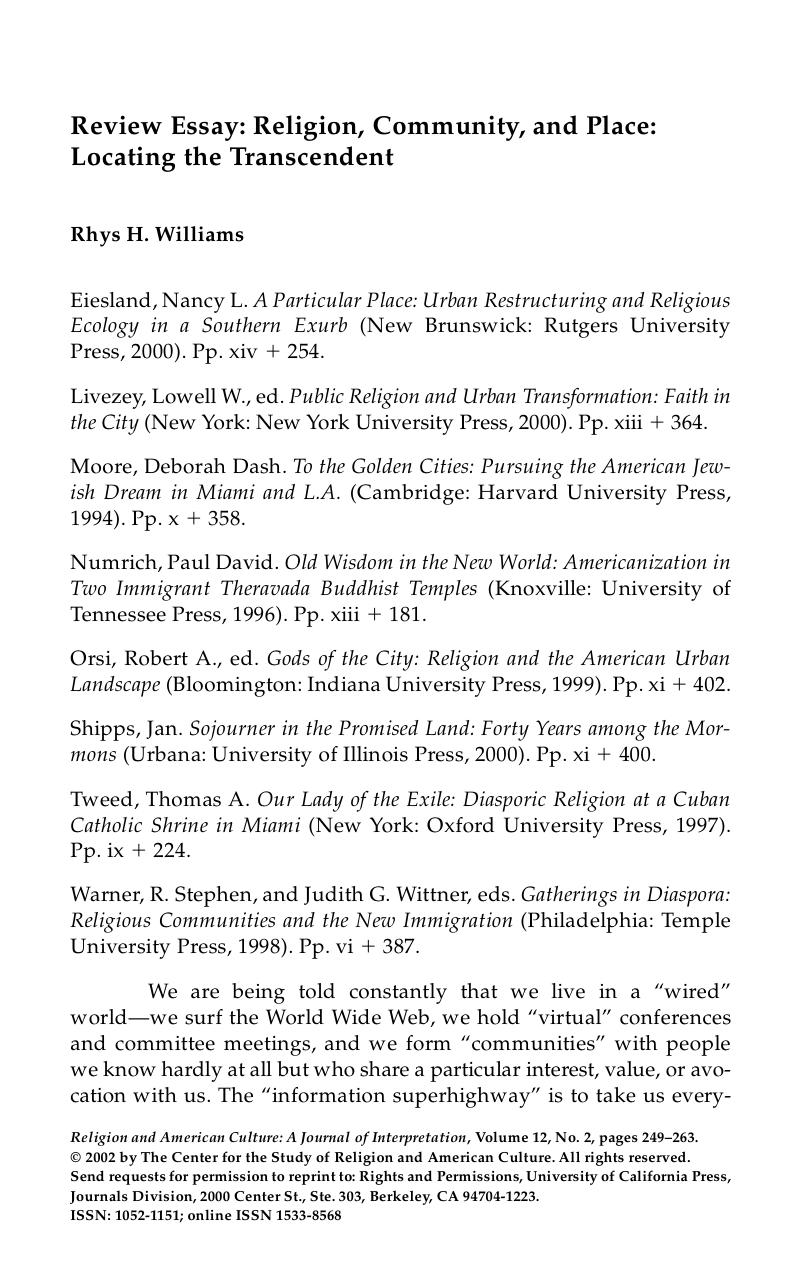Published online by Cambridge University Press: 18 June 2018

1. Recent examples in the scholarly world include Roof, Wade Clark, The Spiritual Marketplace: Baby Boomers and the Re-Making of American Religion (Princeton, N.J.: Princeton University Press, 1999)Google Scholar, Brasher, Brenda E., Give Me That Online Religion (San Francisco: Jossey-Bass, 2001)Google Scholar, Cobb, Jennifer J., Cyberspace: The Search for God in the Digital World (New York: Crown Publishers, 1998)Google Scholar, Taylor, Mark C., About Religion: Economies of Faith in Virtual Culture (Chicago: University of Chicago Press, 1999)Google Scholar, and Beaudoin, Tom, Virtual Faith: The Irreverent Spiritual Quest of Generation X (San Francisco: Jossey-Bass, 1998)Google Scholar. In addition, there is a massive literature aimed at pastors and church people, providing guides as to how to do online and Internet ministry.
2. Relatedly, I thought there were also noticeable differences between the first and second generations of the Asian worshipers—not just in dress and language but also in their whole orientation to the temple and the ceremony.
3. Anderson, Benedict, Imagined Communities: Reflections on the Origin and Spread of Nationalism, 2d ed. (London: Verso, 1991)Google Scholar.
4. This is not completely unplowed ground, of course. For example, see the thematic forum, “The Place of Religion in Urban and Community Studies,” Religion and American Culture: A Journal of Interpretation 6, no. 2 (Summer 1996):107-29.
5. See, for example, Berger, Peter L., The Heretical Imperative: Contemporary Possibilities of Religious Affirmation (Garden City, N.Y.: Anchor Press, 1979)Google Scholar.
6. See Orsi, Robert A., The Madonna of 115th Street: Faith and Community in Italian Harlem, 1880-1950 (New Haven, Conn.: Yale University Press, 1985)Google Scholar.